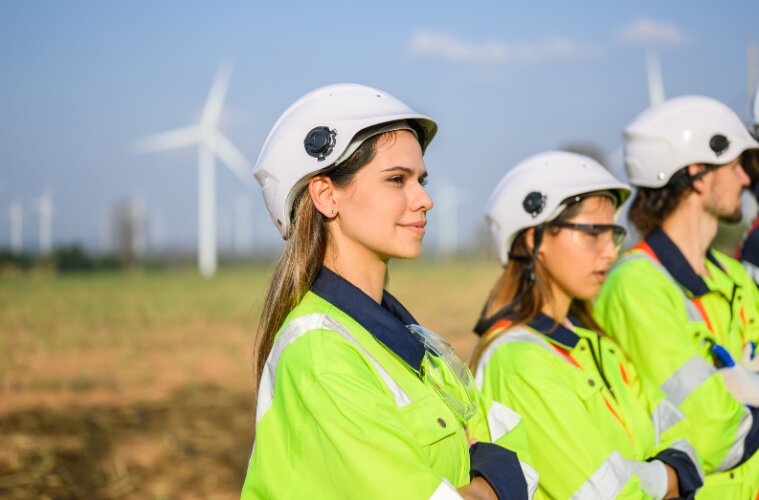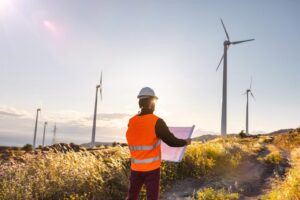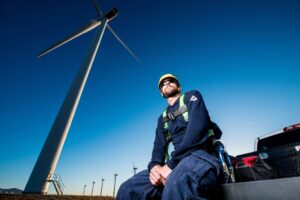As the world accelerates toward a clean energy future, the role of emerging talent in sustaining this momentum has never been more critical. Among this next wave of workers is Generation Z—a cohort defined by its digital fluency, passion for purpose-driven work, and hunger for lifelong learning. For the renewable energy sector, particularly wind and solar, engaging Gen Z isn’t just an opportunity—it’s a necessity.
At STL USA, we recognize that building the future workforce of clean energy starts by aligning our training, tools, and mission with what matters most to the next generation. By bridging industry needs with Gen Z values, STL USA is setting a new benchmark for workforce development in the energy transition.
Why Gen Z Matters to the Renewable Energy Industry
Gen Z, loosely defined as those born between 1997 and 2012, is entering the workforce in large numbers. According to the U.S. Bureau of Labor Statistics, Gen Z will make up 27% of the global workforce by 2025. At the same time, the renewable energy sector faces an acute talent shortage. In wind energy alone, there is a 6–8% technician vacancy rate, which threatens project timelines and safety standards.
Globally, the International Renewable Energy Agency (IRENA) estimates the sector will need to fill over 38 million jobs by 2030 to meet decarbonization targets. This gap can only be filled by cultivating a skilled, engaged, and future-ready workforce—and Gen Z is key to achieving this.
Understanding Gen Z: What Drives Them?
To truly connect with Gen Z, it’s vital to understand their professional values and expectations. Here are three of the most prominent characteristics influencing their career decisions:
1. Purpose-Driven Careers
Gen Z wants more than a paycheck—they want to make a positive impact. A 2023 Deloitte survey found that 77% of Gen Zs want their work to be meaningful, particularly in areas like sustainability and climate action. Renewable energy provides an ideal platform for this: working in wind or solar means being on the front lines of combating climate change.
2. Digital Integration
This is the first generation of true digital natives. They expect employers and educators to use modern technologies to enhance experiences, streamline processes, and offer flexibility. Platforms like virtual reality (VR), augmented learning environments, and mobile-first platforms are essential tools to engage and retain Gen Z talent.
3. Continuous Learning & Career Progression
Gen Z is ambitious and highly motivated by growth. They are looking for clear, structured career pathways with opportunities for upskilling, certifications, and advancement. According to LinkedIn, Gen Z changes jobs more frequently than previous generations—making career development a key retention strategy.
STL USA: Leading with Vision, Innovation & Purpose
At STL USA, we’ve designed our approach to workforce development with these principles in mind. As a global leader in clean energy safety and technical training, we don’t just prepare students for today’s roles—we empower them to lead the industry tomorrow.
1. Immersive & Digital-First Training
To meet Gen Z where they are, STL USA has invested heavily in technology-driven learning. Our training centers feature cutting-edge simulation environments and virtual reality components that mirror real-world wind turbine scenarios. Whether students are learning tower rescues or electrical diagnostics, they do so in highly immersive, digitally enhanced settings that build confidence and safety awareness.
Our online learning management system (LMS), which launches this year, will provide hybrid flexibility, allowing learners to access coursework and assessments on their own schedules—an essential feature for today’s mobile-first generation.
2. Structured Career Pathways
Understanding Gen Z’s need for progression and clarity, STL USA offers clear, stackable training pathways designed to support long-term career development. One of our most popular offerings, the Total Wind Training Pathway, bundles together core GWO (Global Wind Organisation) certifications and technical courses in a format that moves learners from entry-level safety competencies to advanced rescue, electrical safety, and technical diagnostics.
Courses include:
This holistic, modular structure helps learners envision their future and actively work toward it, reducing attrition and enhancing confidence in their chosen career path.
3. Purpose & Impact at the Core
STL USA doesn’t just teach skills—we connect those skills to impact. Every course is framed around the role of technicians in advancing renewable energy, protecting the environment, and powering a sustainable future. We host workshops, guest speakers, and employer partnerships that help students understand the bigger picture and feel part of a global movement.
Through our WindStart Program, for example, career changers and new graduates are introduced to the industry through an engaging curriculum that ties technical instruction with environmental stewardship and social impact.
4. Career Placement & Support
In partnership with top renewable energy companies, STL USA provides career support services to help our graduates find job placements in onshore and offshore wind, solar, and energy infrastructure. This full-circle approach ensures that Gen Z not only receives world-class training—but also finds a meaningful place to apply it.
A Future Built by the Next Generation
Gen Z is ready to build the future. What they need is opportunity, support, and a roadmap to success.
At STL USA, we’re proud to be the bridge between this generation’s ambition and the renewable sector’s workforce needs. By prioritizing digital innovation, purposeful education, and structured growth, we are not only engaging Gen Z—we are shaping them into the safety leaders, technicians, and innovators who will drive the clean energy revolution forward.
Learn more about how STL USA are helping build the future energy workforce
Get in touch to learn about our bespoke training programs.



